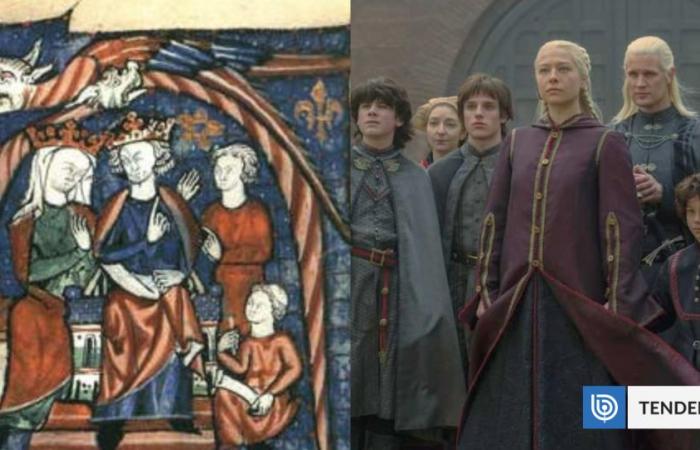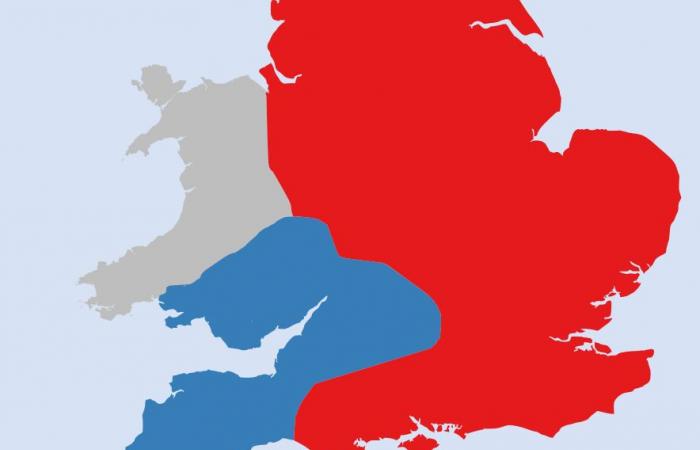For lovers of medieval stories, George RR Martin’s fantasy world seems to have no limits. However, the author of “Game of Thrones” has mentioned that, no matter how much he invents, There are always historical events that are just as terrible, or even worse.
The HBO series, “The House of the Dragon,” based on his work, follows the internal conflict of the Targaryen dynasty, two centuries before the events of “Game of Thrones.” In the latter, Martin also flirted with history, taking as inspiration the events that occurred during the Wars of the Roses in the mid-15th century, between the houses of Lancaster and York.
As The Telegraph recalled this Sunday, “The House of the Dragon” also uses elements of real history to build its world. In this case, inspired by the dramatic events that occurred in England in the 12th century.
The real story behind The House of the Dragon
“The House of the Dragon” follows a succession crisis following the death of King Viserys I, whose designated heir is his daughter Rhaenyra. However, his three children with his second wife also claim the throne, sparking a bloody civil war.
This plot resembles the succession crisis of the 12th century in England, when King Henry I, after the death of his only legitimate son in the “White Ship disaster” in 1120, left his daughter Matilda as heir. Like Rhaenyra, Matilda was a capable leader, but The idea of a woman ruling was not welcomed by the English nobility. After Henry’s death in 1135, Matilda faced several rivals for the throne.
The truth is Before 1272, the succession to the English throne was not clearly defined. There was no system that ensured the automatic transfer of power from the deceased king to his heir. Instead, the country was plunged into uncertainty until someone – usually children, cousins or advisors – managed to take the throne. The latter, whether through invasion, assassination or taking over the Treasury.
The lack of a clear royal inheritance procedure at that time fostered chaos and uncertainty. Matilda’s cousin, Stephen of Blois, stepped forward and took the crown, reigning from 1135 to 1154. However, his authority was constantly challenged by Matilda, which resulted in a fragmentation of power in the country.
The Anarchy
While Stephen controlled the southeast, Matilda controlled the southwest and the rebel barons took over the rest. This period, known as the “Anarchy”, It was marked by the absence of law and order, with constant sieges, skirmishes and looting.
According to the British media, the chronicler Orderic Vitalis describes how The men indulged in theft and violence, burning houses and not respecting women or monks. The figure of Robert FitzHubert, a mercenary known for his cruelty, illustrates the barbarism of the time. FitzHubert boasted that he had been present when eighty monks were burned along with his church, and he enjoyed torturing prisoners, leaving them naked in the sun and covered in honey to attract insects.
The common people faced desolation, with crops requisitioned, homes destroyed and lives in constant danger. Poor harvests led to famine, and survivors resorted to eating bitter herbs, roots, and even their own domestic animals. Some built their homes in defensive blocks around churches, while others migrated in search of safety.
Despite the violence, many barons longed for the return of law and order. Matilda, although gifted with leadership, also made mistakes that questioned her ability to govern. This tumultuous period was characterized by the fragmentation of power, with numerous castle lords acting as local kings and minting their own currency.

Castle building became an obsession, with more than a thousand erected during this time. Contemporary chroniclers describe these castles as filled with “demons and evil men.”
These historical events, with their invasions, shipwrecks, castles and famines, have inspired writers such as George RR Martin, proving that reality can be as strange and terrible as fantasy.








